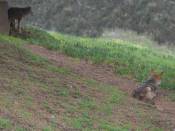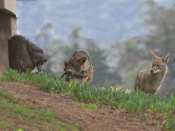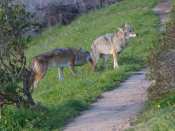It was dark, so I couldn’t see anything, but I heard the vocalization loud and clear: a coyote was calling out to someone and there was no response, a snippet of which I’ve embedded here. I know the voice, and when I got home, by lightening the video, I was able to confirm visually that this was Mom.
Two weeks ago, Mom and her family left her usual hangout area in this section of her territory where I was now hearing her calling. Last year she also had moved in order to have her pups in a safer area. Note that this is still within her 2.5 square mile territory, it’s just a different hub of that territory. The wooded area she left here has been continuously cleared by the San Francisco Park Department irregardless of the habitat needs of our wildlife, in particular coyotes. What appears to matter to them is *what they think should live here*: i.e., native plants. The problem being that this area was all sand dunes long ago, and the few native plants that grew here were small desert type plants that provide no real habitat protection, especially from the many off-leash dogs who like chasing and antagonizing the coyotes. Dogs are an invasive, non-native species for which the coyotes need thicker cover for protection than what native species can offer. The sheer number of dogs in the city is overwhelming. The coyotes used to use the thick, entangled undergrowth to hide in. I went over to the area being cleared: it’s mostly hidden from human view by the few trees they’ve left up as a sort of curtain. All that’s left is dead wood: so this is probably the reason for moving. Note that “mating for life” I’m finding to be less and less true these days. This alpha female is on her fourth mate.
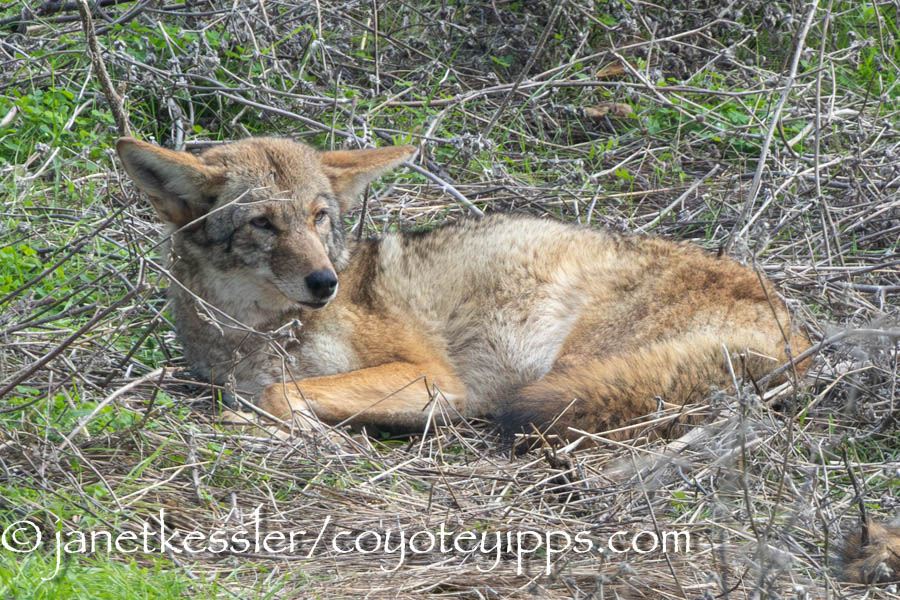
So Mom moved her family, along with her new mate and two yearlings. One *pup* — not quite a year old yet — can still occasionally be seen here alone: I don’t know if he chose to remain behind or if he was *assigned* to remain here: both ideas have occurred to me as possibilities, but there’s no way for me to know this. This youngster is a relatively large male, and I can imagine that Mom’s new mate might not want him around: I say this because of the bite marks I’ve seen on his snout the last few times I’ve seen him. Coyotes discipline, convey dislike, AND show dominance by grabbing another’s snout, sometimes quite hard.
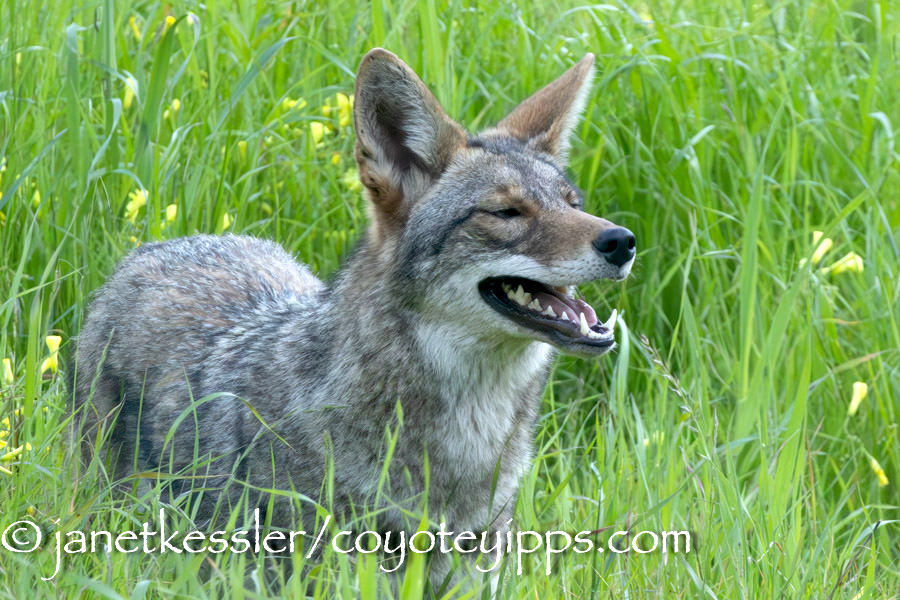
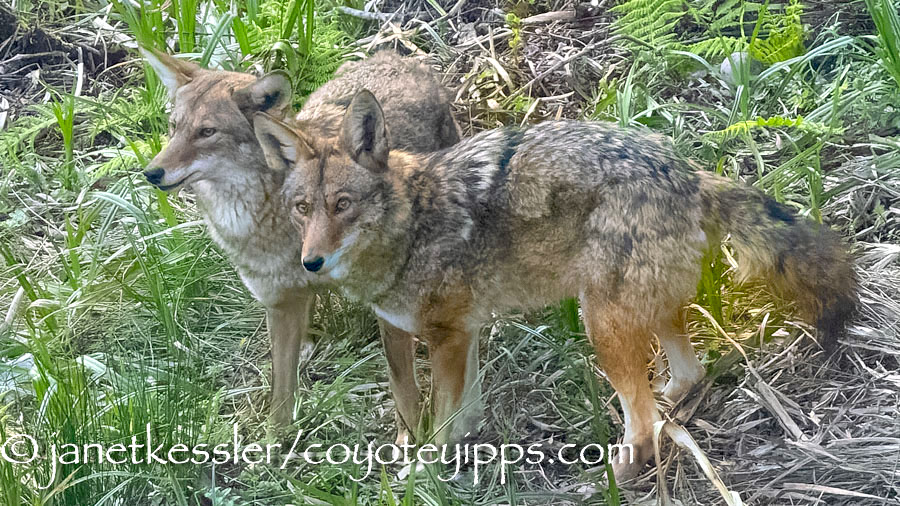
Mom herself went through a family makeover earlier this year. First of all, her mate from over the past several years left her. Well . . . did he leave her or was he driven out? Again, I don’t know the answer, but either way, I found him happily paired up with another female on her territory about a mile away: it was such a surprise because coyotes have famous reputations for mating for life. It might be interesting for all to know that, as far as I have seen, it’s the females who choose (or inherit) their territories, and who also choose their specific den sites. Did he leave of his own volition, or was he driven out by her? I think the former, but I can’t prove it.
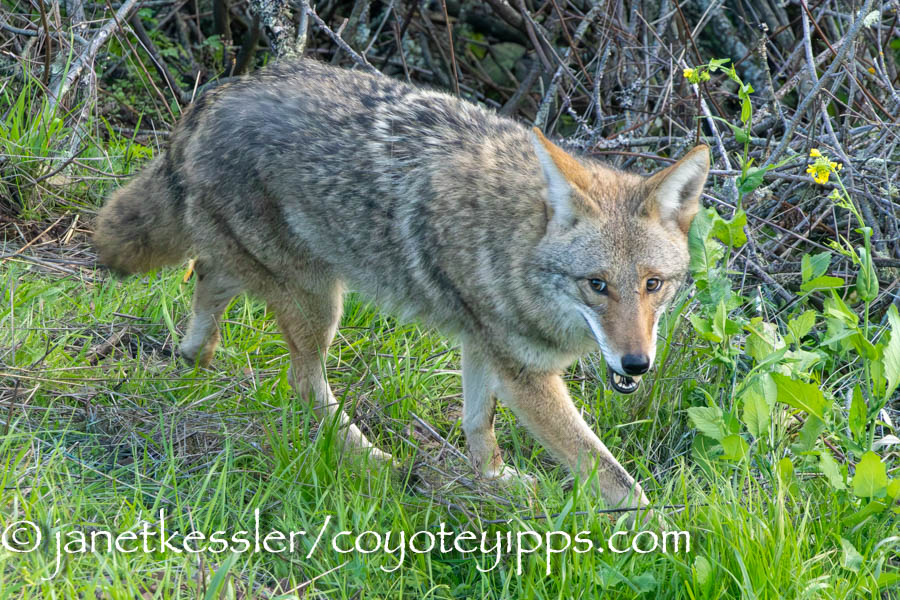

Then, last night, Mom was back here, definitely calling someone from her family. The calling went on for ten straight minutes: I’ve cut out a short section of it for you to hear. Who was she calling to? It could have been the large male pup who has been hanging out here alone, only he was not around last night. But, might she have been calling her old mate? Maybe his departure had not been a fait accompli? Maybe she was hoping he hadn’t left? Then again, maybe she was looking for her new mate who might have wandered off? I haven’t seen any of them since they left except 11-month old son. And then a few days ago I heard this definite calling out with no response on March 14th.











